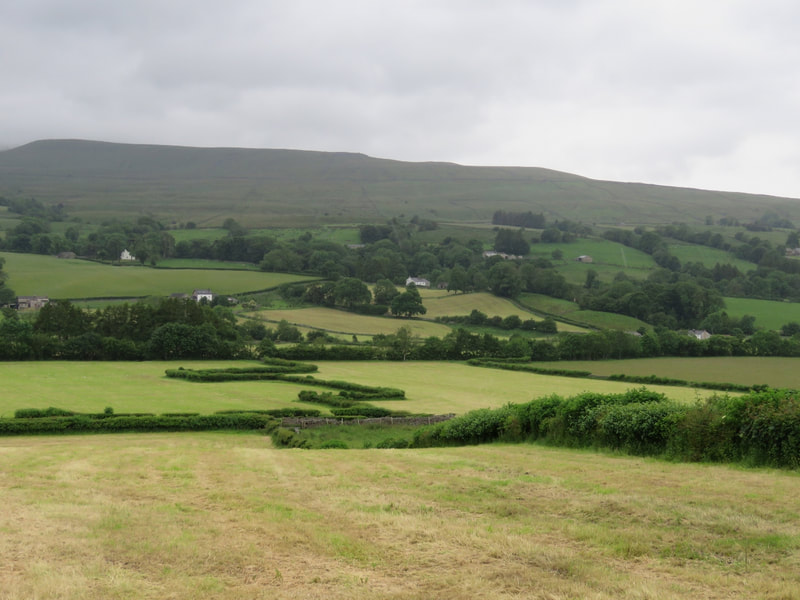 Eyebright in a Dentdale Hay meadow
Eyebright in a Dentdale Hay meadow This morning, Farming Today casts further light on the importance of hay meadows and their traditional management. On either side of the River Dee there are meadows and we pass farmhouses and barns, a pastoral landscape. Rising in the distance, the moors and uplands where a hundred years ago curlew bred, a ground-nesting bird in dramatic decline. The curlew habit has changed and now the bird breeds increasingly in hay meadows, requiring some two months to incubate and rear its young. No topping or mowing during that time.
Traditional management best suits the flower-rich hay meadows of Dentdale. One cut annually, once the flowers have set seed and ground-nesting birds have reared their young. We came here on 23 June 2017, an overcast day when drizzle was welcome after a heat-wave. By the afternoon, the sun burnished the hay meadows in all their glory. Today, cloud is stubborn and there are showers. June has been wet. Not a day when images show the hay meadows at their best. Having revisited the Yorkshire Dales Millenium Trust website on hay meadow low-input management I'm puzzled to find a farmer out there mowing, leaving heaps of grass strewn with autumn hawkbit and buttercup. Yellow rattle is in flower and whilst the green calyx swells it will be a while before you can shake the plant and hear the rattle that tells the seed is set. The Trust works with farmers, aiming to link-up hay meadows to extend their reach, to create wild-life corridors. But as we walk we notice changes in the diversity of flora in meadows beside the river. To know which farms work closely in conjunction with the YDMT we need a guide.
For more on Dentdale hay meadows, a brighter day with better images
Blog 23 June 2017













 RSS Feed
RSS Feed